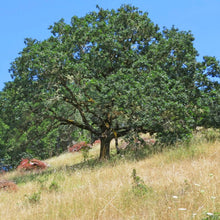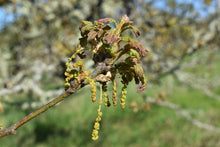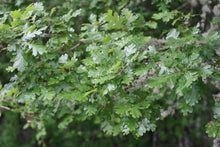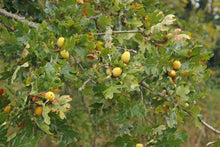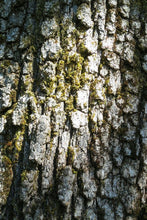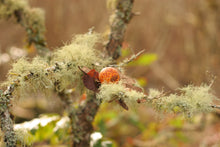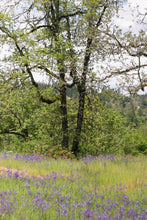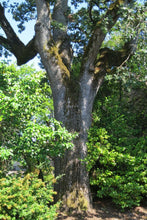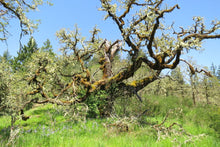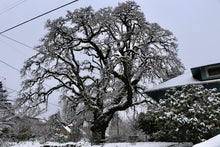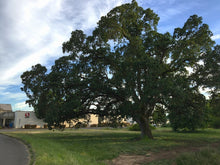
Quercus garryana
The stout, sprawling branches of a mature white oak are a cradle for a staggering variety of wildlife - over 200 species of insects, birds and mammals are supported by this iconic species! Before white settlement and colonization, Oregon white oak woodlands and savannas were thriving throughout the Willamette Valley, thanks in part to sophisticated indigenous land care techniques. Sadly, scientists estimate that only about seven percent of the oak woodland and two percent of the oak savanna habitat remains in the valley today. In addition to being pure habitat magic, this tree is hardy, extremely long-lived and drought-tolerant, with deep taproots that anchor it (and maybe us too) in place. For these reasons and more, it is an excellent choice for those establishing a new garden, where you have the time to watch its beauty unfold and to one day enjoy ample summer shade beneath its sweeping canopy, or for those looking to plant a meaningful legacy tree for generations of land stewards and wildlife to come.
- Plant type/canopy layer: deciduous, perennial, large tree
- Size at maturity: 40-65' tall, 30-70' wide
- Light requirements: full sun
- Moisture requirements: dry to moist soil, well-drained
- Bloom time: April - June
- Growth rate/ease: appears slow growing, but actually has medium growth rate over the long-term (see note below), moderately easy to grow
- Wildlife support: deeply fissured bark and hollow branches of old trees provide nesting sites for birds, squirrels, bats and other small animals; flowers are a nectar source for adult butterflies, bees and other insect pollinators; leaves are a larval food source for moths and butterflies; acorns that provide food for many small animals, deer, wild turkeys, band-tailed pigeons, woodpeckers and more; overall plant attracts and supports beneficial and other pest eating insects and is a caterpillar host
- Native habitat/range: common in open grasslands, dry hillsides, and woodlands of the PNW, west of the Cascades, particularly dense throughout the Willamette Valley. Portland Plant List - yes.
- Special features & uses: wildlife favorite; drought-tolerant; medicinal; edible acorns; landscape uses include pollinator gardens, rock gardens, erosion control, habitat hedgerows and windbreaks
Gardening with Oregon White Oak: This iconic tree will thrive with ample sunlight found in savanna and open woodlands with dry to moist soil. Be prepared to water deeply, but infrequently in the first 2-3 years. Once established, it is tolerant of both drought and seasonal flooding. Many people think this tree is slow growing because, in the early years it focuses its energy on a massive amount of root growth, setting the foundation to provide 500 years of essential ecosystem services like critical wildlife habitat and carbon sequestration. This below-the-surface growth goes unnoticed but after 5-10 years, the above-ground growth kicks in, and follows a moderate pace.
Photo Credits 1, 4, 5, 8, 9, 11 (mature form, acorns, bark close up, urban trunk, ancient trunk in savanna, at Safeway): © Ed Alverson, some rights reserved (CC-BY)
Photo Credit 2 (flowering): © Gail A Baker, some rights reserved (CC-BY)
Photo Credits 3, 6, 7 (leaves, gull, with camas): Karli Del Biondo, Beatles and Bees
Photo Credit 10 (Portland snowstorm): © Joseph Rojas, some rights reserved (CC-BY)











